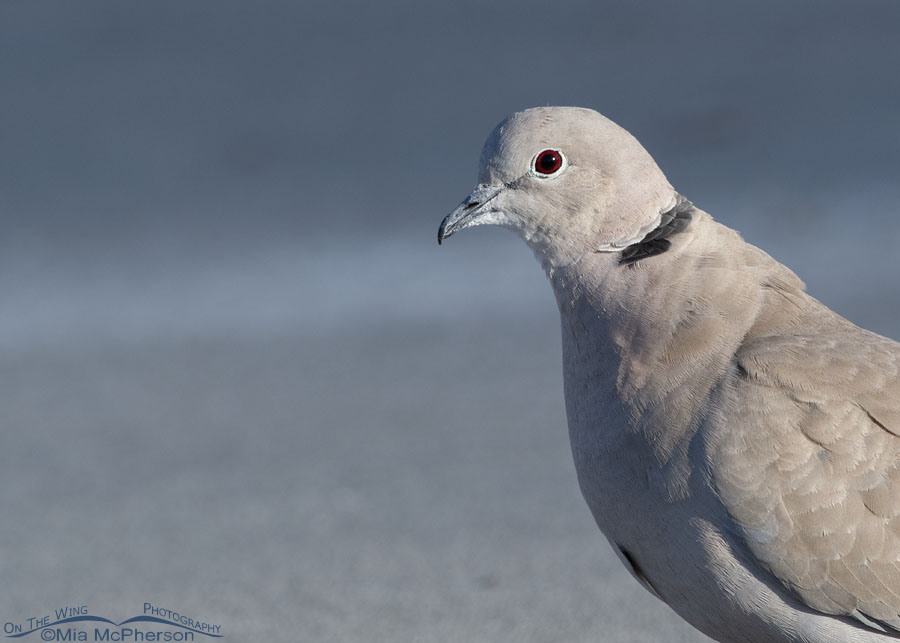Two days ago I shared a close photo of a curbside Mourning Dove. Today I am sharing a Eurasian Collared-Dove image taken at nearly the same time and same place.
 Urban Eurasian Collared-Dove portrait – Nikon D500, f8, 1/800, ISO 500, Nikkor 500mm VR with 1.4x TC, natural light
Urban Eurasian Collared-Dove portrait – Nikon D500, f8, 1/800, ISO 500, Nikkor 500mm VR with 1.4x TC, natural light
I took my photos of the Eurasian Collared-Dove before the Mourning Dove. The non-native dove and the native Mourning Dove were about 15 feet apart. Both doves seemed to be searching for food next to the curb, and they paid no attention to each other.
One of my friends, Shari, who lives in San Diego, noted that in her location, the territories of these two dove species don’t overlap. I had no idea that was the case because here in northern Utah, I often see both the non-native Eurasian Collared-Doves and native Mourning Doves in the same areas, in urban settings and out in places that are more wild.
I appreciate all birds, even the non-native ones. Usually, they were introduced by humans, but some species have made it to North America on their own.
Eurasian Collared-Doves are larger than the Mourning Doves, and some might even say more aggressive; yet, I can’t help but notice how beautiful they are. Through my viewfinder, I saw a lovely bird, not the word “non-native.”
I liked the lovely morning light I had when I took photos of this dove, and the great view of its ruby-red eye. I was happy I took this dove image. I still am.
Life is good.
Mia
Click here to see more of my Eurasian Collared-Dove photos plus facts and information and information about this species.


Our native doves are in much smaller numbers than the non natives. Their territories do overlap though.